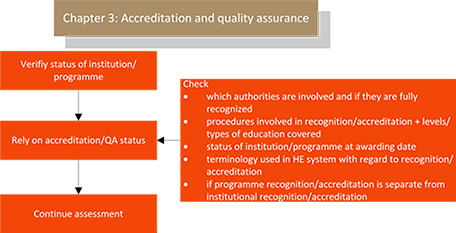ACCREDITATION AND QUALITY ASSURANCE (STATUS OF THE INSTITUTION)
SUMMARY
According to the Lisbon Recognition Convention a foreign qualification cannot be properly assessed without checking the status of the institution that awarded it. In the present chapter various hints are given on where to search for information and how to assess qualifications from systems with different quality assurance procedures.
FLOWCHART
